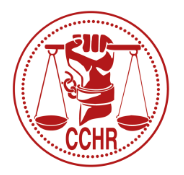
There’s no doubt that drugs are available everywhere. People take drugs to cure a medical condition. People take psychiatric drugs to supposedly treat a “mental disorder.” Some people take designer drugs to experience a “trip” instead of the usual high. Incredibly enough, some designer drugs and psychiatric drugs have more in common than you would think.
Designer drugs are created in a lab by changing the properties of the drug using the tools of chemistry. The result is a drug that produces a different effect on the brain and a person’s behavior, therefore a different extreme high or “trip.” Ecstasy, cystal meth (methamphetamines) and LSD would fall under the designer drug heading.
Recently, a designer drug called “smiles” (its street name) or 2C-I (the chemical name), has gotten some media attention as there have been a few deaths linked to this drug. Basically, this drug causes auditory and visual hallucinations accompanied with feelings of giddiness, relaxation and empathy. It could be called a cousin to amphetamines because it is related to a drug class called phenylethylamines which are structurally similar to amphetamines. The bottom line is that it is a drug with an amphetamine backbone that is mixed with other chemicals to produce the “trip” effect.
Some psychiatric drugs, like Adderall for example, actually are amphetamines. Ritalin is not an amphetamine but it is a stimulant nonetheless and similar in nature to amphetamines. Both are prescribed to treat ADHD in children. Apparently these types of drugs affect hard to control children by making them calmer which is the opposite one would expect since they are basically being given “speed.”
In any case, 2C-I, Adderall and Ritalin have several adverse side effects in common. 2C-I can cause an increase in heart rate, high blood pressure, strokes or heart attacks. One person on this drug began hyperventilating and hitting his head on the ground. Several hours later he stopped breathing and died. Ritalin and Adderall also elevate blood pressure and can cause heart attacks, strokes or even sudden death. Additionally, seizures are a possible side effect of Adderall and 2C-I.
When one experiences a “bad trip,” nausea and vomiting as well as terrifying hallucinations accompanied by fear and panic could be possible. Hallucinations and nausea are also side effects of Ritalin.
One reason these drugs have mutual adverse side effects is that all three drugs interfere with brain function. They are mind-altering drugs, just in different forms but similar in nature. They all change perception, mood and behavior and not necessarily for the betterment or welfare of anyone. “Trips” on 2C-1 can turn into episodes of psychotic behavior and even just taking Ritalin or Adderall for ADHD can also cause psychotic episodes.
Recently, a man allegedly killed his landlady and fell to his death while he was possibly under the influence of 2C-1. What is interesting is the media said he may have been having mental health problems and using drugs. This prompts the question which came first? Was this man acting psychotic before alleged use of 2C-1 or did his “mental health problems” appear as a result of a bad “trip?” Given the above side effects, the drug-induced psychosis is more likely.
With that in mind, what about people that were supposedly “mentally ill” who committed suicide? Psychiatrists will tell you they didn’t get enough treatment in time. However, many psychiatric drugs carry an FDA Black Box Warning. This is to make one aware that increased thoughts of suicide and violence are a possible side effect from taking the drug. Wouldn’t it make more sense that the psychiatric drug altered that person’s mind and in turn his behavior, so that the drug caused the person to commit suicide?
Since it’s a fact that psychiatric drugs like Ritalin and Adderall plus multiple others cause drug-induced psychoses, it raises the question why are they being given to children for ADHD? Is the goal to replace their undesirable behavior with possible psychotic episodes? Is it morally right to give kids amphetamines or amphetamine-like drugs that have side effects in common with 2C-I?
Because it’s a fact that there are no medical or scientific tests of any kind to detect any “mental illness” or “mental disorder,” one needs to know that undesirable behaviors are not a psychiatric concern. The physical cause needs to be found. Just as a psychotic episode can result from taking 2C-I, other undesirable behaviors can stem from something else and not from a “mental illness.” Don’t be fooled when you see psychiatric drugs marketed as the panacea for mental health. It’s time that we realize that what they really are is a bad “trip.”
http://www.foxnews.com/health/2012/09/24/latest-designer-drug-called-miles-linked-to-teen-deaths/
http://www.cbsnews.com/8301-204_162-57522571/smiles-drug-implicated-in-actors-death-what-are-they/
http://www.interventionsupport.com/designer-drug-addiction/
http://aboutpsychdrugs.com/adderall
http://aboutpsychdrugs.com/ritalin
Free Baker Act Help - Call Us: 800-782-2878
info@cchrflorida.org


0 Comments